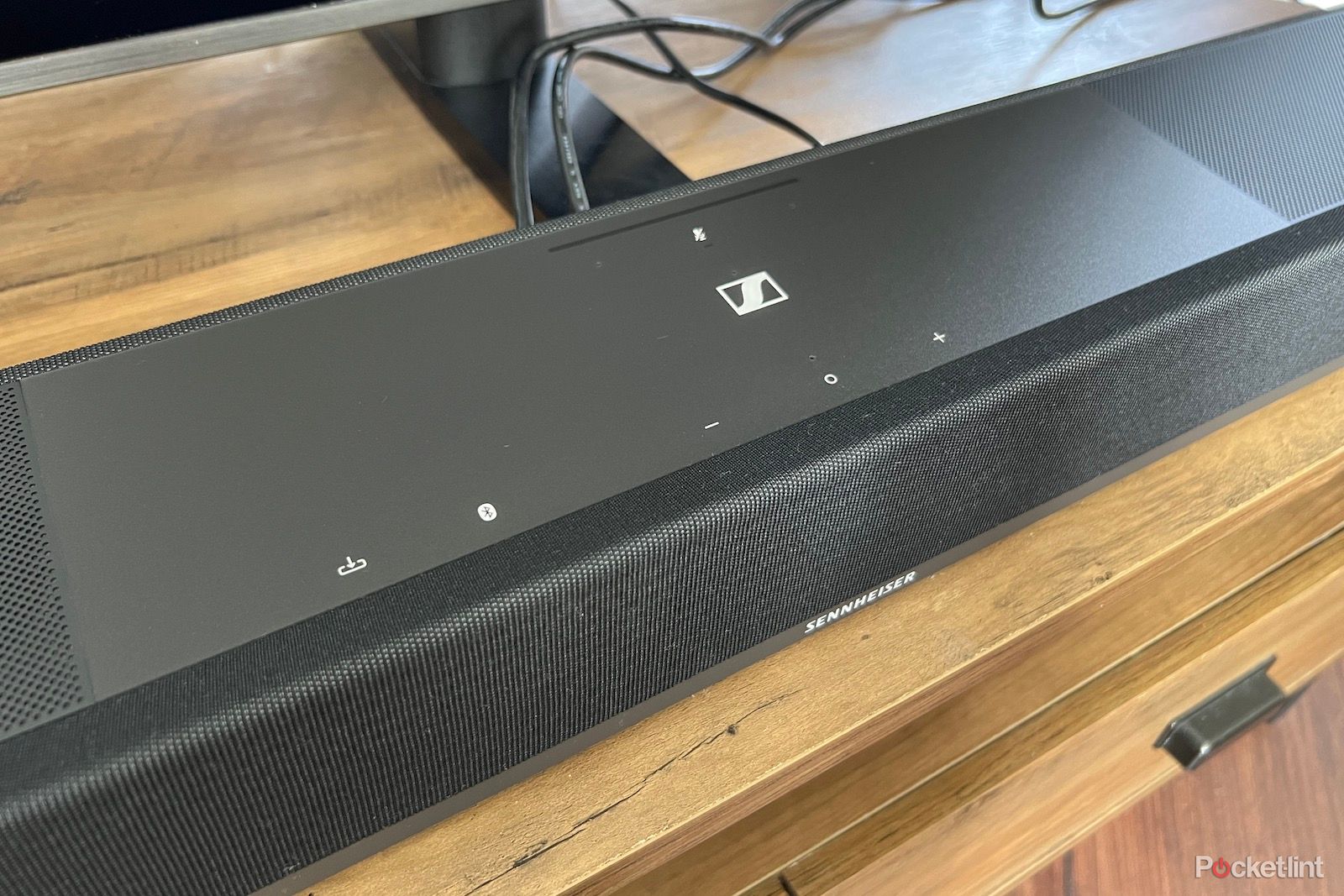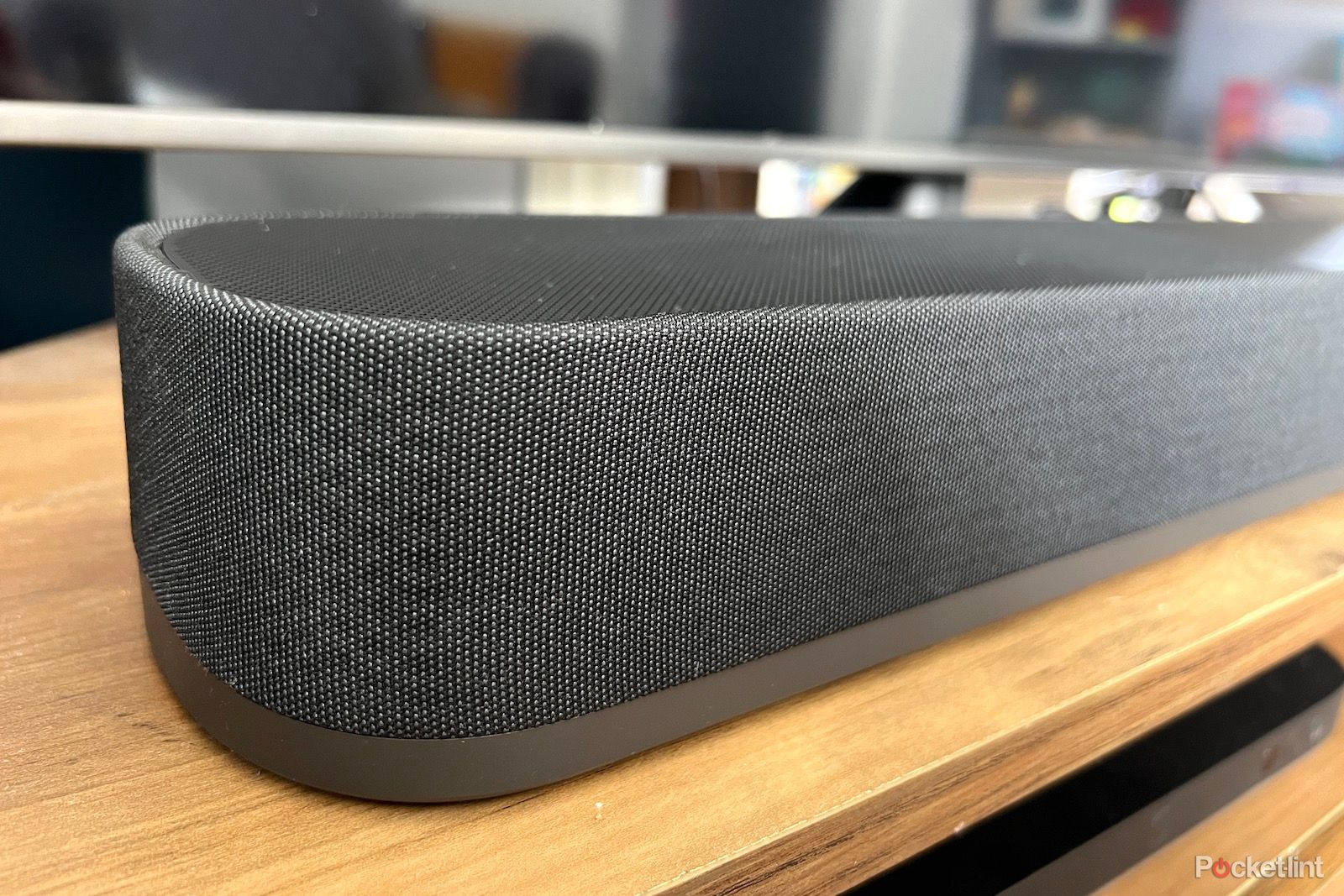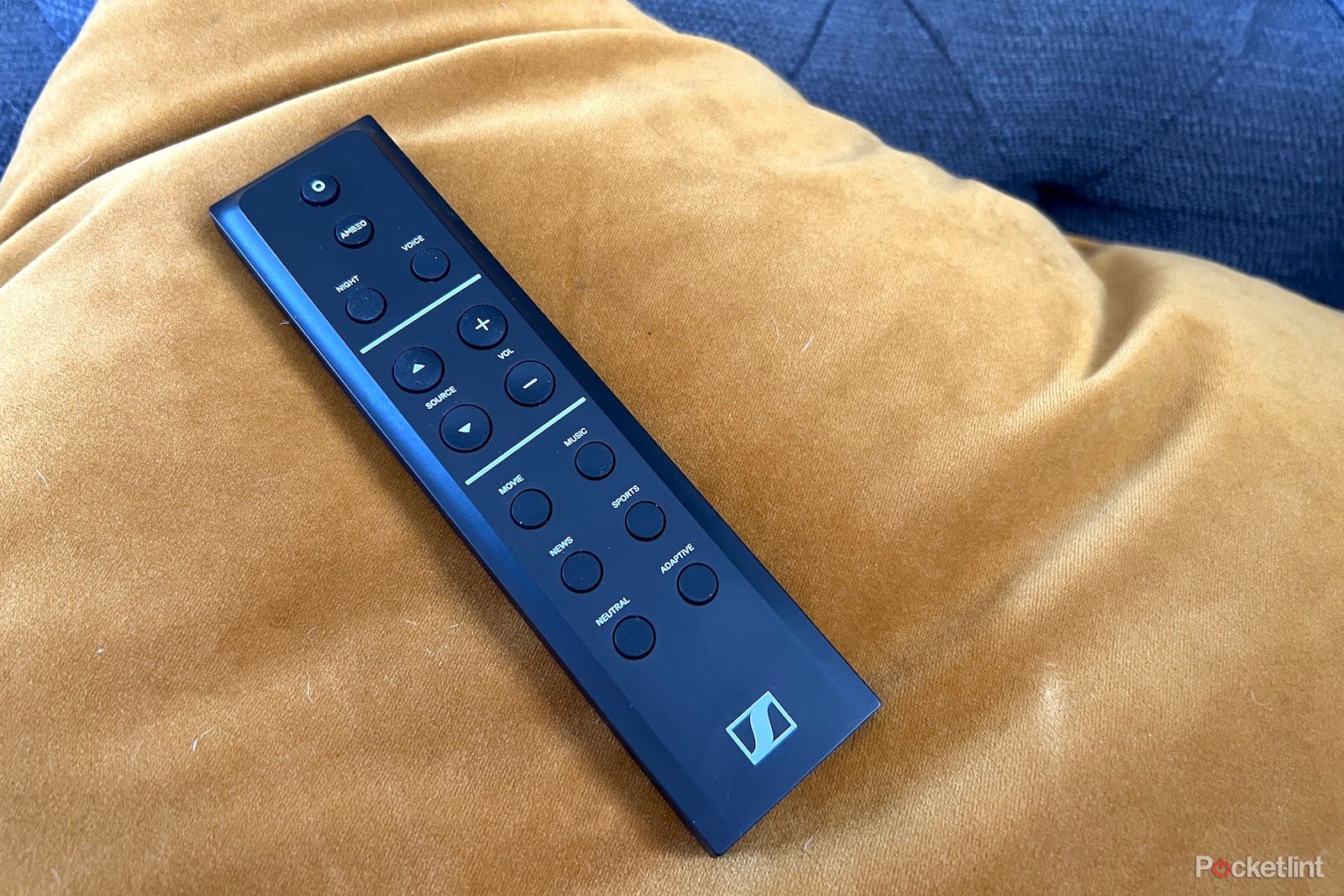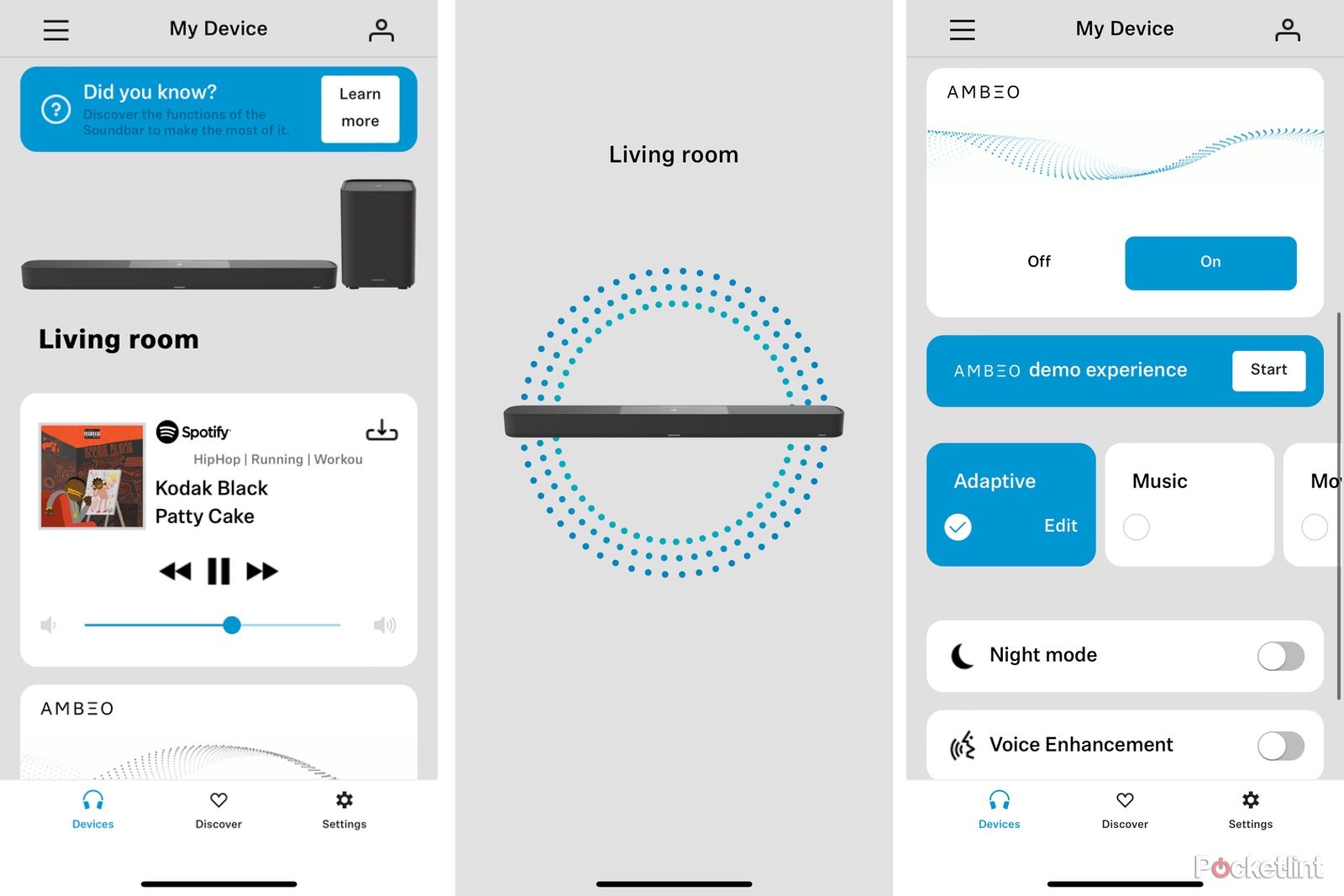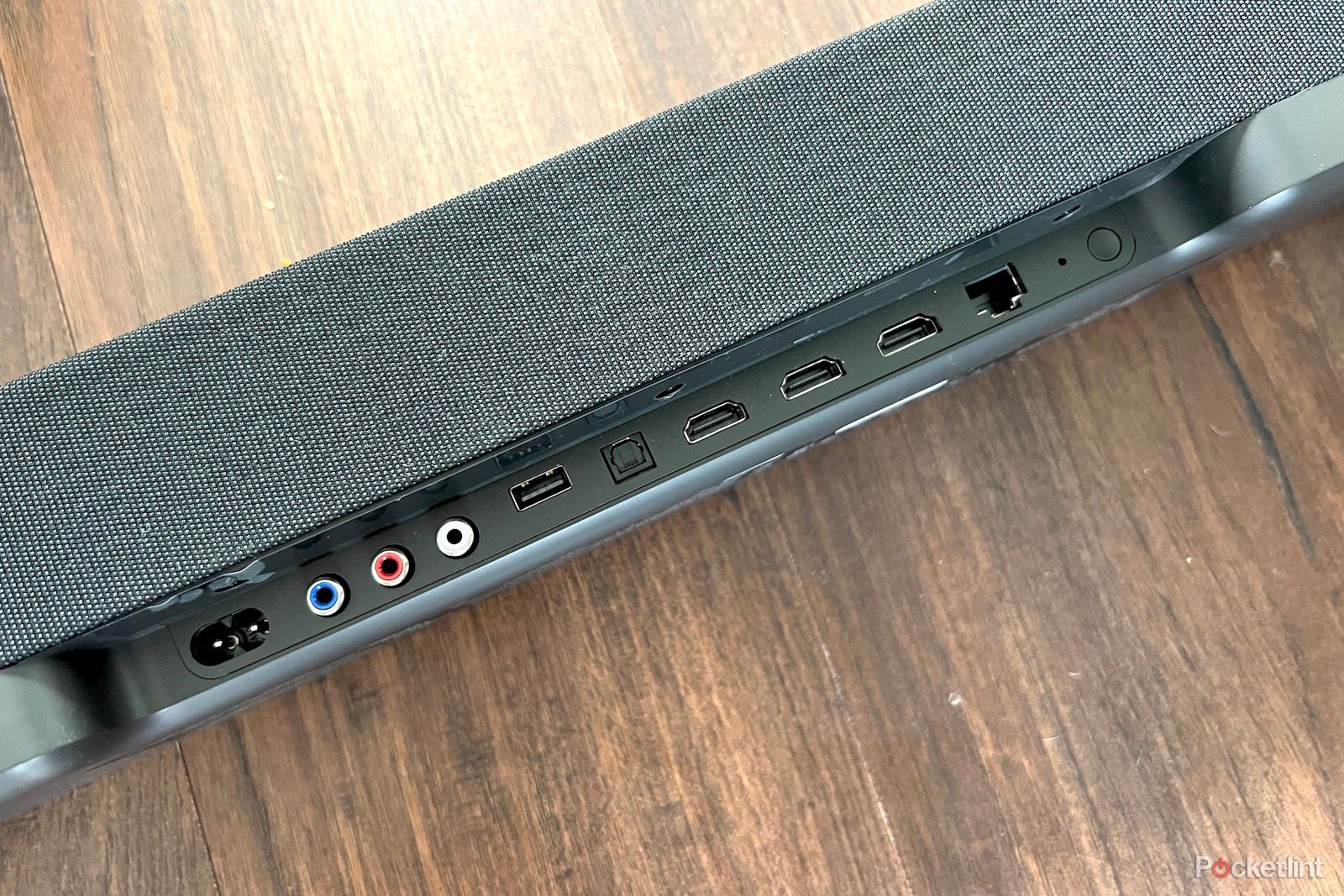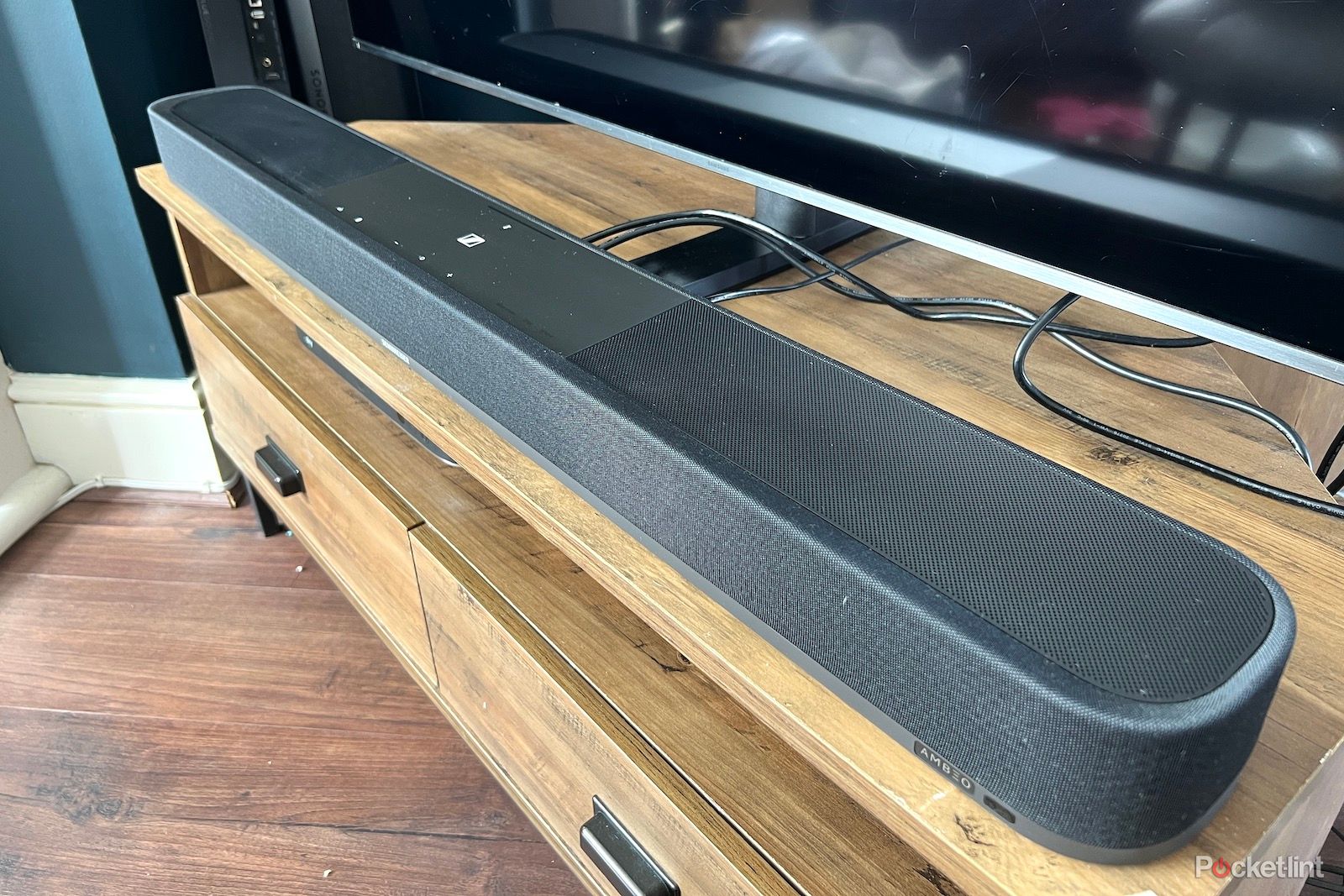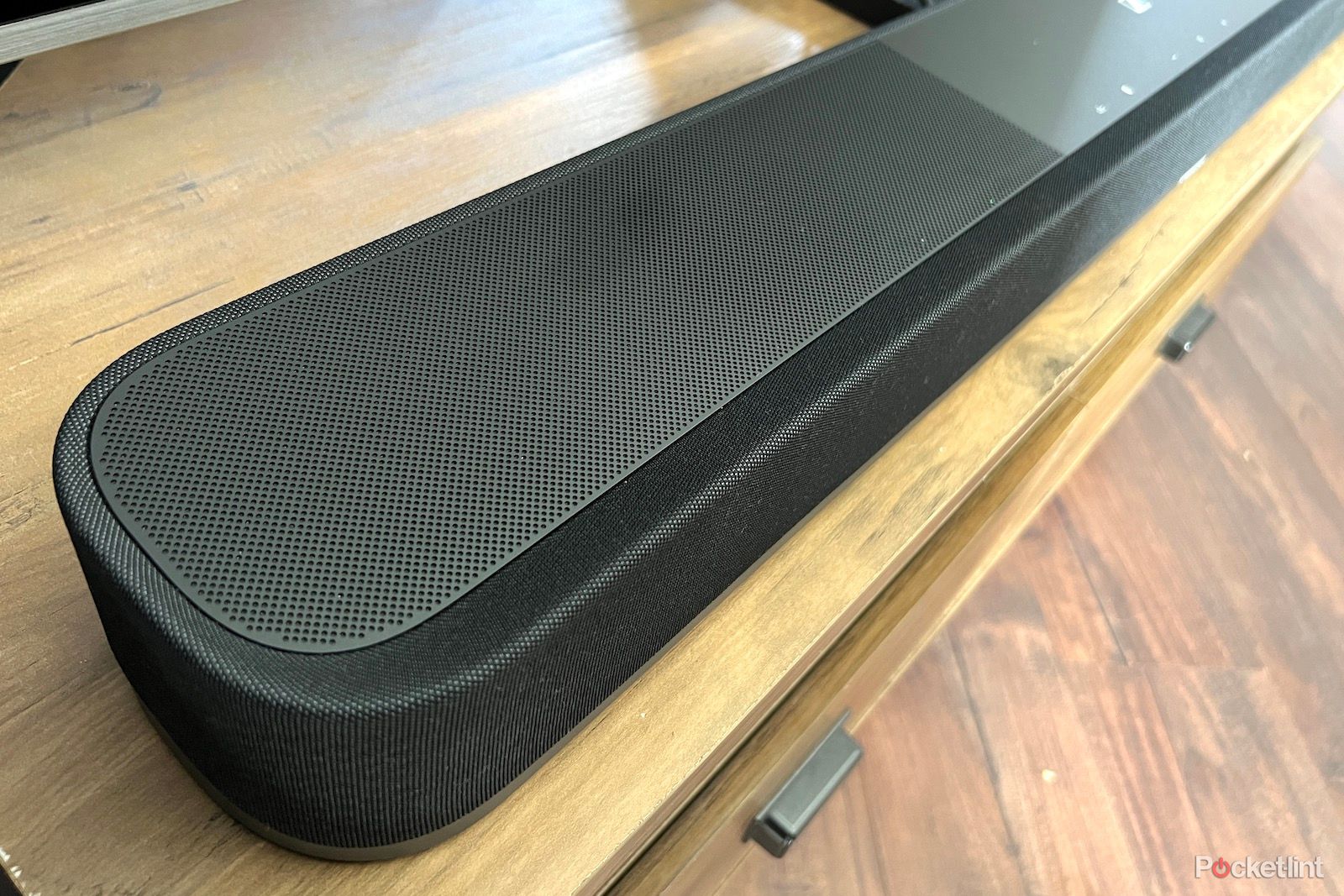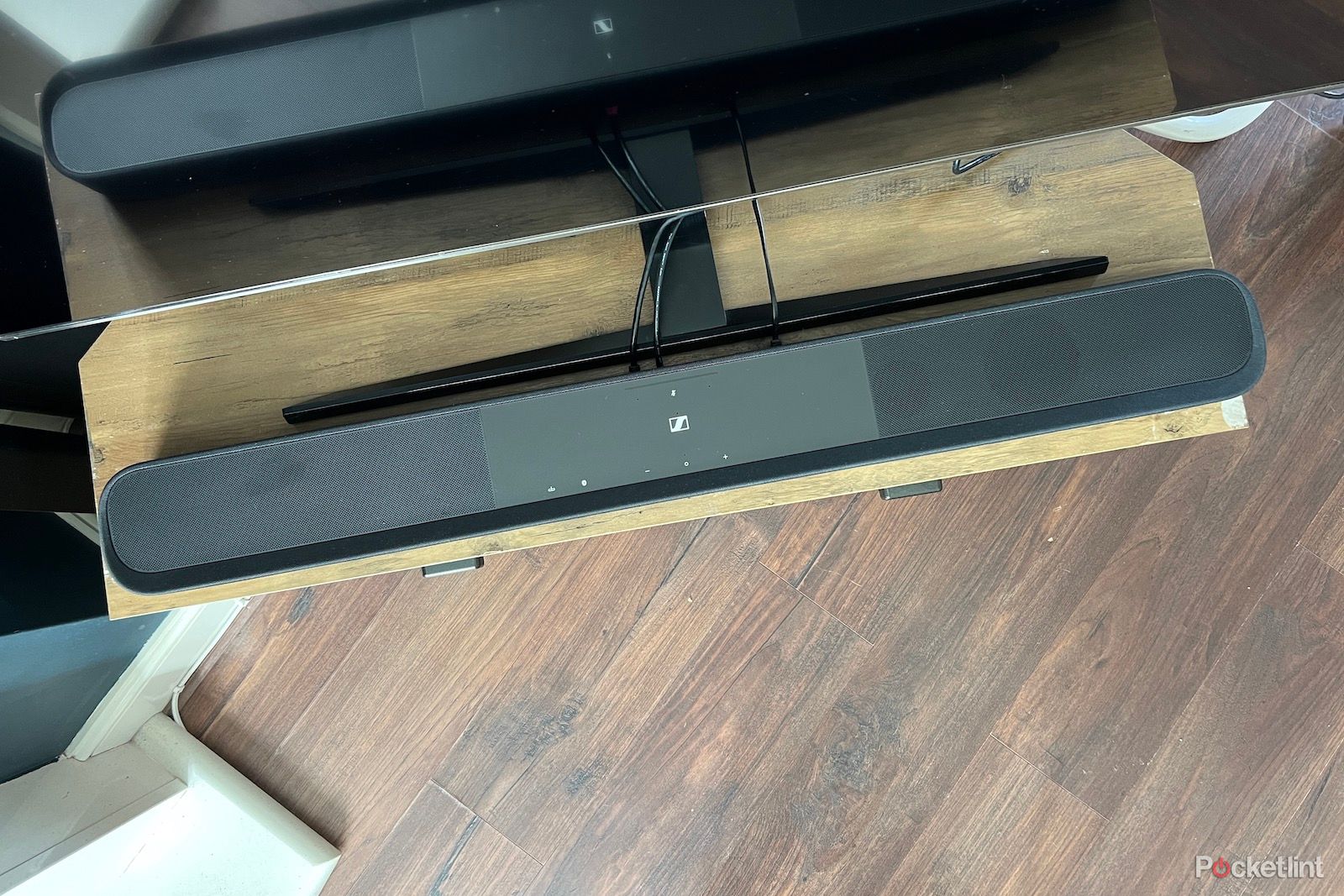If you're looking to spend upwards of $1000/£1000 on a soundbar, chances are you care a fair bit about how your AV system looks and sounds (and have the budget to splash out).
While that sort of money was previously reserved for proper surround sound systems, a growing number of soundbars are aiming themselves at these premium price brackets - offering the kind of uplift in performance that a dedicated movie lover craves, without the space, wires and know-how that a surround sound setup might require.
The Sennheiser Ambeo Plus is one of those soundbars and the middle child in Sennheiser's accomplished soundbar lineup. It sits beneath 2019's frankly mammoth Sennheiser Ambeo, now renamed Sennheiser Ambeo Max, and above the Sennheiser Ambeo Mini. It offers Dolby Atmos playback (and DTS:X and Sony 360 Reality Audio, for that matter), but unlike many of the competition at this price, it does so from a single and pretty compact box. But what's it like to live with? I put it through its paces to find out.
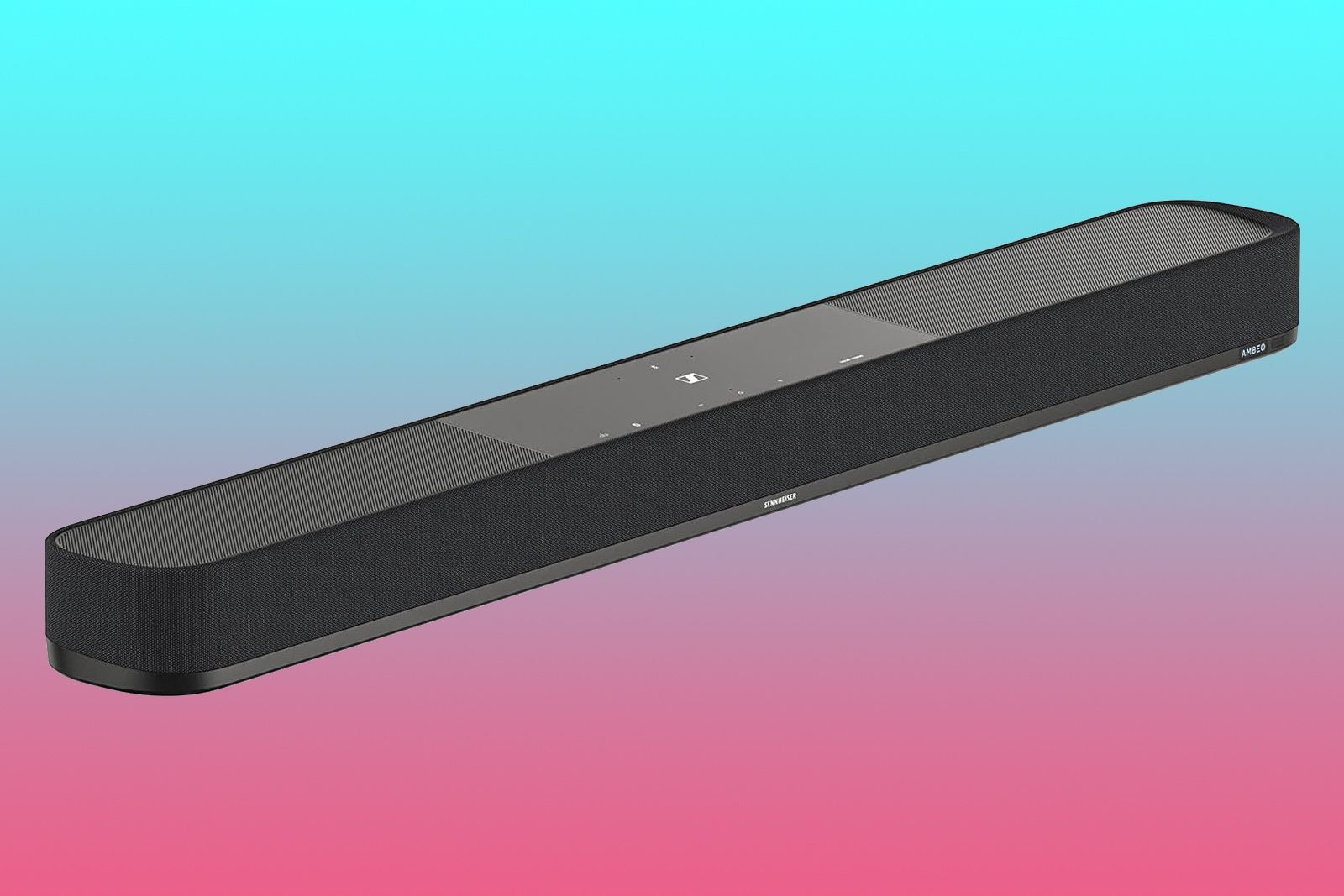
Sennheiser Ambeo Plus
If you're looking to spend big on your next soundbar purchase, the Ambeo Plus offers an incredibly cinematic spatial audio performance from an all-in-one design that's much easier to accommodate than some of its chunkier competition.
- Big, cinematic sound
- Superb detail and dynamics
- Great size and design
- Strong feature set and control options
- No 4K/120Hz passthrough on usable HDMIs
- Undeniably pricey
Pricing, specs and availability
The Sennheiser Ambeo Plus is available for $1200/£1149, placing it above the Sennheiser Ambeo Mini at $800/£699 but significantly below the mammoth Ambeo Max at $2000/£2100.
Sennheiser Ambeo Plus
- Connectivity
- Bluetooth 5.0, AirPlay 2, Google Chromecast, Spotify Connect, Tidal Connect
- Ports
- 3 x HDMI (1 x eARC), 1 x optical, 1 x USB, 1 x RCA
- Power
- 400W
- Subwoofer Output
- Yes
- Speaker Arrangement
- 7.1.4ch
- Dimensions
- 1051 x 75 x 121mm
- Drivers
- 7 x 50mm full-range drivers, 2 x 10cm subwoofers
Design
The thing that's perhaps most endearing about the Sennheiser Ambeo Plus' design is its size. Considering what's going on behind its grilles, it's surprisingly compact, at just 105cm long, and conveniently shallow, too. Measuring 8cm tall, it'll slide under most TVs without issue, making it a lot easier to accommodate than some of its competition.
In fact, it sits just shy of running edge to edge with my 55-inch TV - so if your telly is that size or above, it'll complement it perfectly.
Sennheiser has opted for a fabric grille that wraps around the soundbar's mid-section, with a high-quality plastic grille covering the upwards firing Atmos speakers on the top and plastic control panel. There's a plastic base, too, but all of it looks great. It's well-designed, but sensible, with gently curved edges that help to soften its overall look.
Up on the top of the bar, that control panel offers you touch-sensitive controls for volume, Bluetooth and input selection, as well as a mic mute button for when you want to be sure the built-in voice assistants (with a choice of Alexa or Google Assistant) aren't listening in.
There is an LED strip on the top that will light up differently depending on the source you are playing from, including using different coloured lights for Bluetooth, Spotify Connect and USB. It's not hugely helpful from a seated position as this light is pretty much out of sight for me, but it's also not distracting, which is something.
You can also control the soundbar via the Sennheiser's Smart Control app, which is easy to use and really convenient, or there is an included remote instead if you prefer. It's pretty simple - slim and plastic with rubbery buttons that allow you to control things like source and volume, as well as flick between audio modes like Movie, Music, News, Sports and Adaptive, plus special modes like Night (which takes a bit of the oomph out of the bass) and Voice (for picking out dialogue better).
I found sticking with Adaptive worked well for most content, but you can play around with the modes to see which you prefer.
There's also a button for Ambeo, wherever you choose to control the soundbar, which is Sennheiser's custom processing for spatial audio. I'll touch more on this later, but it aims to deliver a 3D audio performance to all soundtracks, whether Atmos (and its equivalents) or not.
Features and connectivity
The Ambeo Plus is a 7.1.4ch soundbar with a total of nine drivers at work behind those grilles, delivering 400w of sound. Seven of those are 50mm full-range aluminium drivers, with dual 10cm subwoofers in charge of the bass.
To help achieve the best Atmos sound, two drivers and both subs are upwards firing, with a driver at each corner to help deliver extra width as well. The remaining three drivers are arranged along the front to help give a forward focus to things like dialogue.
There is the option of adding a subwoofer, either wirelessly using the Ambeo Sub ($600/£549) or using the wired subwoofer pre-out.
Other connections include three HDMI ports (one of which is HDMI 2.1 with eARC for connecting to your TV), as well as 1 x optical, 1 x RCA, 1 x USB and an ethernet port for hardwiring to a router.
It's not a bad showing of connections, with the main HDMI input allowing for the support of full-fat, lossless Atmos. But with the other two HDMI ports using the older HDMI 2.0 standard, it means there is no 4K/120Hz passthrough support for compatible game consoles, like the PS5 or Xbox Series X/S.
The Ambeo Plus is not alone in this - the Sonos Arc has no 4K/120Hz HDMIs whatsoever, but Sony's A7000 offers HDMI 2.1 on all its ports, suggesting that Sennheiser could definitely have done more here.
It's not the end of the world, though - gamers will just need to connect their consoles directly to a compatible HDMI port on the TV instead, though that's assuming they have one spare.
Wireless connectivity is well catered for, with Bluetooth 5.0 alongside AirPlay 2, Google Chromecast, Spotify Connect and Tidal Connect, and all work as you'd expect. This means the Ambeo Plus can double up as a pretty accomplished music speaker, too - but more on that next.
Performance
When you first get started with the Sennheiser Ambeo Plus, you're encouraged to perform a room calibration, which is made possible thanks to its four far-field, high-precision mics.
It's quite particular, mind you, cancelling the calibration and forcing you to restart if a dog barks or it hears someone talking - which is quite frustrating if you get halfway through when this happens. Thankfully, it only takes a few minutes, but you will want to ensure your environment is deadly quiet for it to complete successfully.
You don't need any extra kit to complete it; just sit in your listening position and leave the rest to the bar. It'll fire out a range of strange sounds into your living room to better understand it, tweaking its sound accordingly at the end to ensure the soundbar sounds its best.
And sounds its best, it does. What the Sennheiser Ambeo Plus is capable of from an all-in-one design is nothing short of superb, and from the moment it is plugged in, it transforms the audio coming from my TV.
I've just got regular daytime TV on when I first plug it in, and even with that, the difference is clear. Things aren't just louder (and I mean, room-filling loud when you need it), but the dialogue is clearer, there's greater detail at play, and there's immediately more space in the mix.
However, switch to something that'll make the most of its capabilities, and the Ambeo Plus will take full advantage of the opportunity. Watch any Atmos content on Netflix, and the Ambeo Plus jumps into action, serving up fidelity, scale and immersion by the bucketload.
There's a real sense of height here, from those upwards-firing channels, and width, too, which creates a truly expansive soundstage. There are limitations, of course, and you're never going to feel like the sound is coming from truly overhead or behind you - but for a single box, it's as cohesive a soundstage as I've heard.
There's no lack of punch here, and the Ambeo Plus makes the handling of beefy action scenes look easy. You'll find low-end wallop to spare, but that's always handled with supreme control and authority. There's never a hint of distortion, even when turned up loud.
In fact, the performance is so good here that I wouldn't say there is a whole lot of need for a separate sub for most people - particularly considering the cost - though if pit-of-your-stomach rumble is your thing, then the option is there for you to buy it.
Away from the low end, the Ambeo Plus shows itself to be just as confident a performer too. For all its ability to give the room a wobble when needed, it can handle the softer moments with just as much confidence. Fine detail is pulled to the forefront, as is dialogue, which is never lost in even the busiest of soundtracks.
Treble is as well handled as the low end, too, with crisp precision that never veers into harshness.
In fact, it's supremely balanced and works as a whole - never losing sight of what's going on elsewhere in the frequency range while also giving no area the limelight. Everything pulls together to produce a hugely likeable, cinematic presentation.
I start with the Ambeo setting turned on, and there's no doubt it does what it sets out to do - broadening the soundstage and giving a much more spacious and open presentation. However, I'd use it with care if you want the very best performance.
It's undoubtedly at its best with non-Atmos content, helping to deliver the added sense of height that it intends to - without sounding unnatural or processed. In fact, it's really cleverly handled, and immediately, you feel the sound is lifted from being so focused on the bar.
There is the odd misstep, and - for me - dialogue-heavy content does lose a bit of focus and can sound just a touch hollow with Ambeo mode turned on. If you're watching Question Time, I'd probably choose to leave it off, but with the latest BBC drama or when streaming a show from HBO Max, the Ambeo setting can produce a very welcome effect indeed.
With native Atmos content, be that via 4K Blu-ray or from a streaming service like Netflix or Disney+, Ambeo does the expected and pushes the effect further still - but it can take a bit of the precision and some of the presence out of the sound. For that reason, I'd probably choose to turn Ambeo off and let the sound format do its thing without interference, but this is likely down to personal preference.
The good news is you can see which you prefer or which setting suits that specific content by switching easily between the two settings. It's probably not something I'd want to leave either on or off the whole time, which is slightly annoying, but it's great to have the option of it.
Verdict
The Sennheiser Ambeo Plus is a fantastic soundbar which delivers one of the most cinematic performances that I've heard from a soundbar this size. Sure, it isn't cheap, but it delivers the very best of what you're listening to with an almost dogged determination and from a relatively compact, all-in-one design.
It has the scale to spare but doesn't lose sight of the detail and serves up all of it with an even-handed approach to the frequency range, from low bassy rumbles to crisp highs.
It gives a particularly good showing with Atmos content, delivering the added height and immersion you'd expect, while the Ambeo setting - although not a silver bullet - also brings a pretty solid spatial experience to non-Atmos content. It's an almost effortless performer and one you'll struggle to find from many other bars at this - undeniably lofty - price.

